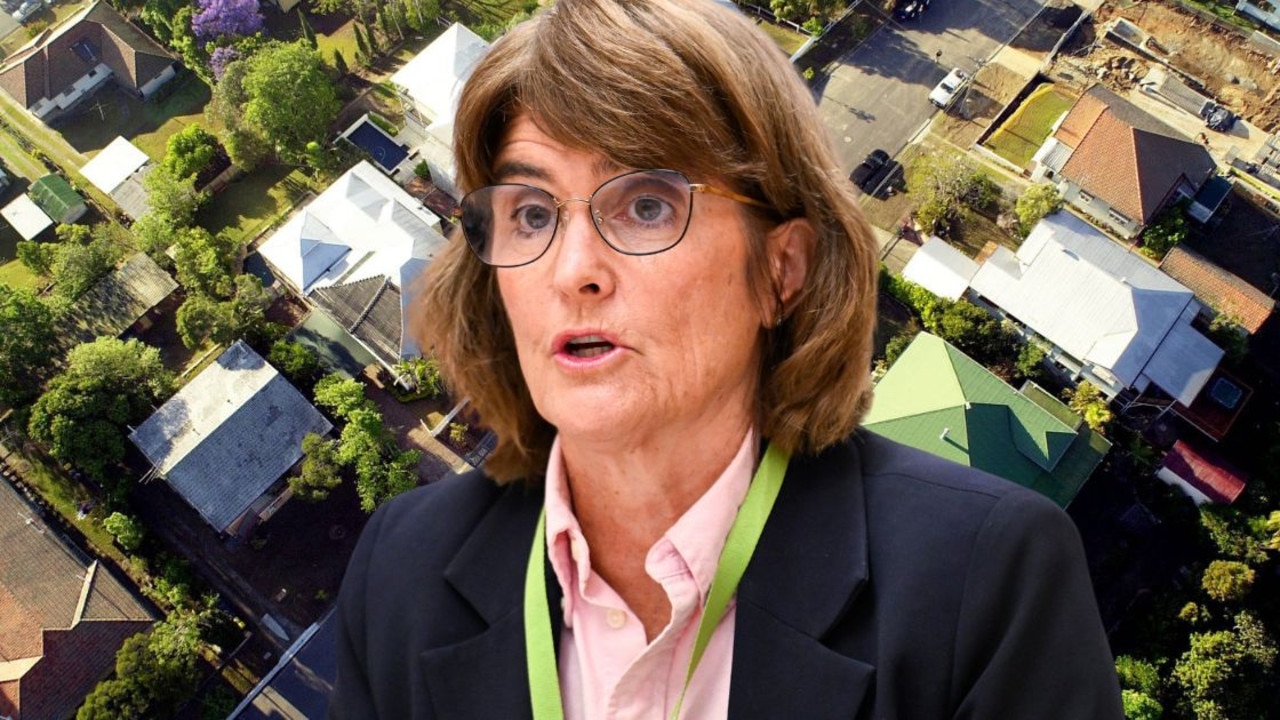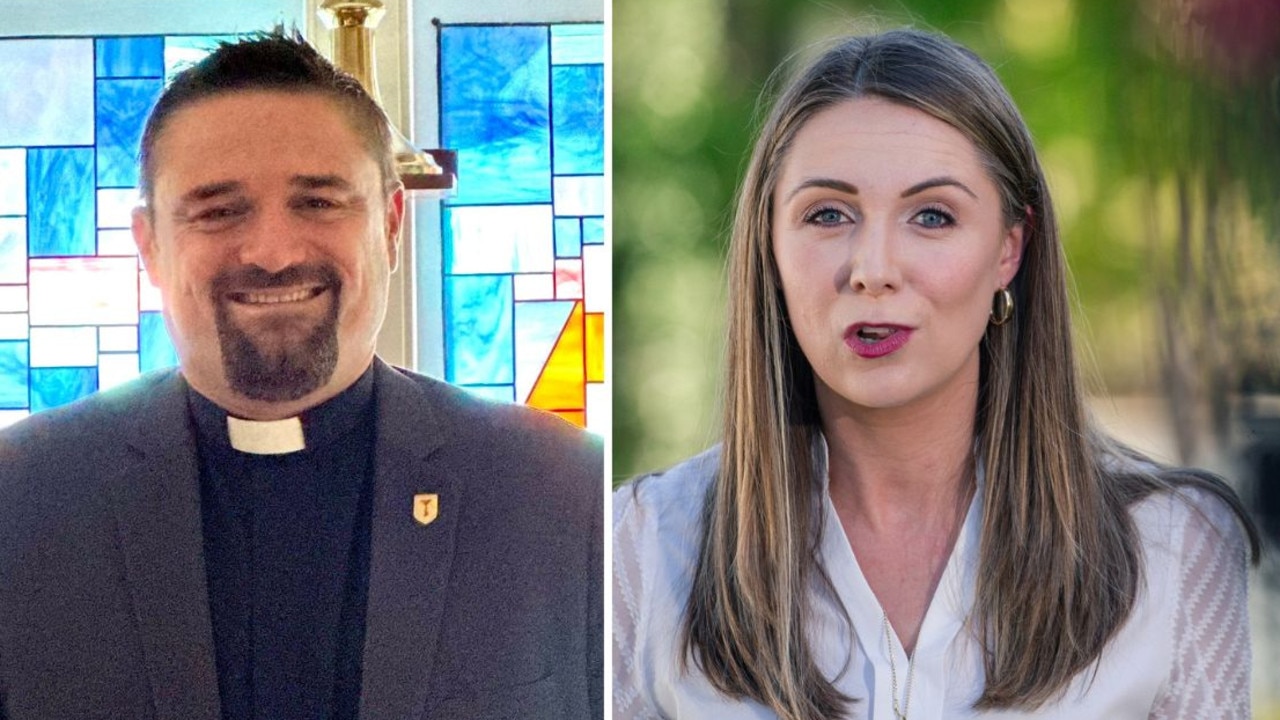Disability no barrier to warrior for equality
Queensland’s Young Australian of the Year is breaking down barriers to help the disabled community be better heard and understood.

CM Insight
Don't miss out on the headlines from CM Insight. Followed categories will be added to My News.
ANGEL Dixon c an barely contain her nerves. Dressed in designer couture, the eyes of the international fashion elite will soon be upon her. She fe els her entire life has been leading to this very moment.
Taking a deep breath, she grips her cane and steps out on to the Los Angeles Fashion Week runway to make her debut as an international fashion model.
Young Queenslander of the Year
Dixon, 28, of the Gold Coast, Queensland’s Young Australian of the Year 2019, has worked hard to make a name for herself as someone who “challenges the perception of disability”.
Modelling at LA Fashion Week in 2016 was an important milestone for Dixon and it was the first time universally designed clothing (by Bezgraniz Couture) had been featured on a mainstream runway. Universal design is the process of creating products and fashion with “diversity of people in mind” such as using magnetic strips rather than buttons or zips.

In 2017, Dixon modelled at Mercedes Benz Fashion Week in Moscow, again for Bezgraniz Couture. This year she appeared at Melbourne Fashion Week, making her the first woman with a physical impairment to model in a mainstream fashion event in Australia. She shared that milestone with Melbourne-based model Jason Clymo, 23, who is a wheelchair user.
Last year she became Australia’s first agency-signed model with physical impairment in a national television commercial with a lead role in Target Australia’s winter fashion campaign. Dixon and Clymo are now both signed with Wink Models.
Dixon, who has one typically functioning hand, intends to take full advantage of her latest accolade.
“I already take every opportunity with two hands and run with it – or in my case with one hand – and the Australian of the Year platform is huge,” she says.
“I’m always an activist first. Modelling is kind of the vehicle I used in the beginning to get my message out there.
“And people are interested in the activism behind this award, rather than just my narrative – and that’s really important to me.
“I’m not sharing a message that is just my own. This is a message that comes from a community of people who have been screaming for this (disability inclusion) for a very long time.
“I’m really proud to get this message out to as many people as I can.”

Born in Port Macquarie, on NSW’s mid north coast, Dixon moved to the Gold Coast with her mother, Anne-Maree, when she was 14 and attended Palm Beach-Currumbin State High School.
Her mother, a retired real estate agent and teacher, was “a bit of a stage mum” who encouraged Dixon into various modelling and stage performances while she was growing up.
At 18, Dixon acquired a spinal cord injury with a diagnosis of Brown-Sequard Syndrome. But even before this, disability had been a part of her life.
Her half-brother Garth James, 56, of Sydney, was born with a diagnosis of brain damage that has since been identified as Angelman’s Syndrome, a chromosomal disorder. (Dixon says she wasn’t named after his disorder, rather “from the time she was pregnant with me, mum said I was her angel”.)
“I am an only child to my mum and my dad (Richard James who died in 2016 aged 78) but I have Garth,” Dixon says.
“Garth has been through institutionalisation, de-institutionalisation and he now lives in a group home in Sydney.
“He is a very important part of my life and an important part of why I do what I do.”
Dixon and her husband Scott, 30, a software engineer, lived in San Francisco in the US for two years from 2015 and it was there she realised how far Australia lagged in terms of representing people with disability in media and advertising.
“Nordstrom (an American department store chain) has been including people with disability in their campaigns since the 1990s,” she says.
“It really opened my eyes that Australia is quite behind. When I was living in the States I really began to understand how this could be done differently and better.”

D ixon is now a public speaker and blogger, CEO of Attitude Foundation and advocacy manager for not-for-profit organisation, Starting With Julius, which was founded in 2013 by Perth lawyer and mother Catia Malaquias whose son Julius lived with disability. She felt there should be better representation of people with disability in advertising.
“One in five Australians identify as experiencing disability,” Dixon says. “Catia was instrumental in reaching out to Kmart and Target about including people with disability in their advertising.
“They now authentically include people with disabilities in all their catalogues and campaigns which is phenomenal. It’s not just tokenistic. They are aware of the statistics and they keep that in mind when they are casting. One of the goals of Attitude Foundation is creating a television documentary series … we aim to have more good media featuring people with disability.”
She is also creating a line of walking canes that will be marketed as a fashion accessory and hopes they will be on the market by the end of next year.
“There’s a saying, ‘you can’t be what you can’t see’. People with disability are excluded from mainstream environments in a lot of ways,” Dixon says.
“But we are getting there. Big mainstream brands are getting greater awareness that people with disability need to be included. That then puts pressure on modelling agencies to provide talent.
“We are moving forward but we can still do better.”


